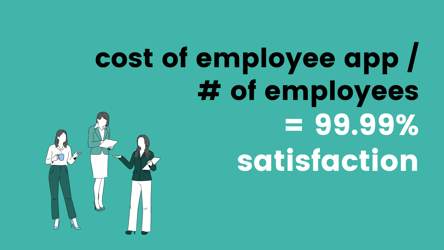Workplace ecosystems have continuously evolved to meet the changing needs of both employees and employers to deliver the best possible experience. COVID-19 in particular has drastically shifted the day-to-day workplace experiences of many.
Among the key differences found in the workplace before and after the pandemic is the need to accommodate employees both on and off-site. These differences have necessitated a shift to the hybrid workplace - where employees can work and collaborate at home and in the office.
In order to build engaging and connected hybrid workplaces, companies are turning to solutions that can manage their spaces, stay connected to the company and offer their feedback in real-time. This is where worktech comes in — workplace technologies specifically calibrated to elevate employee experiences through multiple features and use-cases.
How Can Workplace Technology Support Employee Experience?
Companies leverage worktech to create more connected employee experiences. But in practice - what does this actually look like?
Here is a rundown of different functions a workplace experience solution can provide:
- The ability to book desks, meeting rooms and services on-demand
- Analytics on user occupancy, density and behavior
- Navigation across all office campuses
- A communications hub for their leaders
- Interactive and personalized employee content feeds
And depending on the tool, a worktech solution may offer a single one of these features or all of them. In theory, there's little downside to getting a worktech tool that covers one aspect of employee experiences instead of a holistic one. Overtime, as you accumulate multiple worktech tools however, these single point solutions may become a burden to integrate, maintain, and manage. That's why we often recommend that companies go with a robust out-of-box solution that offers customization — you can start with a multitude of features that will positively impact employee experience and have the option to add to or adjust them down the road.
How to Evaluate and Implement Workplace Technologies at Your Company
Here are the four key steps to keep in mind when looking to evaluate and implement a worktech tool to improve employee experience at your organization.
1. Establish a Cross-Functional Employee Experience Team
A big mistake that many companies make when searching for the right worktech solution for their hybrid workplace is to delegate this task to a single department, such as facilities, real estate or HR. When they do this, they often limit the scope of the solution to the specific aspect of employee experience that their department owns, such as space reservation for facilities management and calculating costs per employee for real estate. Instead, include multiple departments and gather them into a single committee that can combine perspectives to identify a worktech solution which improves workplace experience across the entire organization.
2. Find Employee Beta-Testers
Once you find worktech solutions that fit your criteria, it's crucial to have a team of internal end-users within your organizations that can test out and demo each tool.
Employee beta-tester can evaluate potential worktech solutions on multiple fronts, including:
- Ease of Use — is it easy to adopt this tool?
- Accessibility — is the tool accessible for employees with different needs?
- Usefulness — does the tool offer employees with the functionality they need?
- UI/UX - is the user experience clunky or smooth?
When end-users from different teams and locations can come back with positive feedback about your worktech solution, that's when you'll know that you're definitely on the right track.
3. Empower Internal Worktech Champions
A worktech champion is not just a strong adopter, but also an active believer in the technology and its potential. It's an individual willing to go the extra mile to promote its usage internally.
Ways to develop and nurture internal champions for your worktech solution include:
- Build a Product Intranet - create a knowledgebase that equips power-users with the information they need to offer support on how to use the tool to their co-workers.
- Create a Worktech Newsletter - regularly update your employees on the latest capabilities and features offered by your worktech tool.
- Assign Product Experts on Each Team — select volunteers with a high aptitude to learn and apply your product to become experts within their teams.
Bring Worktech to Your Organization
When done right, your employee experience can become a competitive differentiator that leads to greater productivity, higher employee retention and bigger revenue growth. That's why it's so important to evaluate, select and evolve the right worktech solution to support employee experience at your organization — it can have a positive impact on every aspect of your operation.

.png)

.png)







